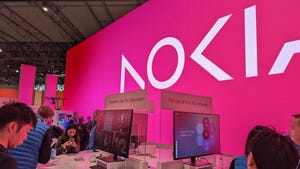Verizon points to FWA as mobile service revenues growVerizon points to FWA as mobile service revenues grow
Verizon posted a solid set of first quarter results on Monday, highlighting in particular growth in wireless service revenue, buoyed by continued adoption of FWA, amongst other things.
April 23, 2024

The US telco reported essentially flat operating revenue for the three months to the end of March at US$33 billion, including $19.5 billion in wireless service revenues, up by 3.3% year-on-year and essentially offsetting a hefty decline in turnover from wireless equipment.
Fixed wireless access (FWA) contributed 452 million of the total, which at this stage remains little more than a drop on the ocean. However, that FWA topline represents big growth – an increase of more than 77% on the same period a year ago – and is clearly emerging as an important business area for telcos in certain markets as a driver of incremental 5G revenue.
Indeed, Verizon gave special mention to FWA as a key driver of mobile service revenue, alongside higher adoption of more expensive pricing plans, and CEO Hans Vestberg pointed to the service in his canned comments.
"We are on track to meet our financial guidance and to deliver positive Consumer postpaid phone net adds for the year. Our fixed wireless subscriber base is continuing to grow rapidly, and our network remains the best in the industry, by far," Vestberg said.
Verizon claimed a total FWA base of 3.43 million at the end of March, an increase of almost 84% over 12 months. Around 60% of the total are consumer connections, but Verizon's business division reported growth in quarterly net adds at 151,000, while consumer net additions fell to 203,000.
The big three US mobile operators all have nascent 5G-based FWA businesses, but Verizon and rival T-Mobile US are the ones really pushing the service. Verizon claimed just shy of 40% of the market at the end of last year, with T-Mobile accounting for the remainder, according to data published by Leichtman Research Group last month. However, Verizon's share of net adds during the year was 42%, suggesting the race is evening out.
We should know for sure when T-Mobile publishes its own first quarter financials later this week.
In the meantime, Verizon has plenty to be upbeat about with regard to its own numbers.
It lost 68,000 retail postpaid phone customers in Q1, which is a big improvement on the 127,000 it shed in the same quarter last year and is better than analysts had expected; according to Reuters, FactSet was looking at losses of around 100,000.
Average revenue per account (ARPA) for Verizon's 34.84 million postpaid accounts came in at $158.25, up by almost 4%, driven in no small part by the consumer market, where wireless retail postpaid ARPA grew by 4.4% to $135.75 as customers increasingly opted for higher-price plans.
Verizon identifies wireless service revenue as one of its three key metrics, the others being adjusted EBITDA and cash flow.
Consolidated net income was $4.7 billion in Q1, down from $5 billion a year earlier, but consolidated adjusted EBITDA grew to $12.1 billion from $11.9 billion. The telco ended the first quarter with free cash flow of $2.7 billion, up from $2.3 billion.
Other noteworthy points included a significant drop in capex to $4.4 billion from $6 billion, presumably reflecting a drop-off in 5G network rollout spending compared with last year, and an $83 million reduction in unsecured debt during the quarter to $128.4 billion.
Verizon reaffirmed its full-year guidance, including 2%-3.5% wireless service revenue growth, which has to be a good sign, although much will of course hinge on how the rest of the year pans out.
About the Author
You May Also Like










.png?width=300&auto=webp&quality=80&disable=upscale)


_1.jpg?width=300&auto=webp&quality=80&disable=upscale)